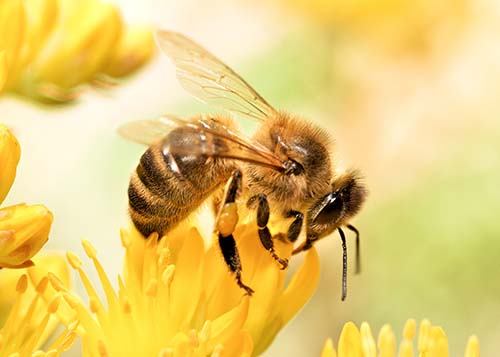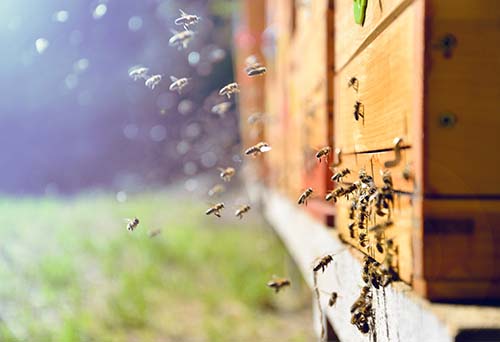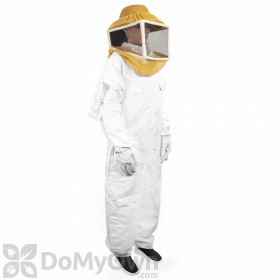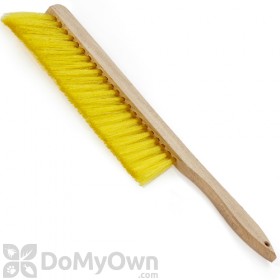
Backyard beekeeping is a hobby that has made a resurgence over the last decade across cities, suburbs, and rural areas. Beekeeping is a beneficial hobby in that it creates local honey and helps pollinators, which have been on the decline in recent years.
If you've thought about starting your own beehive, we have the tools and support you need to get going. Read this guide to learn the basics of beekeeping and what to expect from your first hive.
How Hives Work

Beehives consist of hundreds to thousands of bees contained within a few wooden boxes known as the hive. Bees leave the hive, gather pollen from nearby plants, and then return to the hive to create honey.
Beehives have three types of bees within them:
Queen Bee - The queen bee is the leader bee and each hive has one. The queen populates the hive, birthing eggs constantly over the course of a season. The queen bee is always protected by other bees. The loss of a queen bee can result in the loss of a hive colony.
Worker Bees - The worker bees are the female bees that leave the hive in search of pollen, then return to create honey.
Male Bees - The male bees mate with the queen bee to create new bees. After mating, male bees usually die off.
When you begin a hive, you will receive an order of bees that contains hundreds of bees and one queen. The hive will grow over time as the queen reproduces, slowly creating honey as it grows.
Supplies

Before you become an amateur beekeeper, it is important to know which supplies are absolutely essential and which supplies are optional.
Essential
Boxes - Each hive will live within a series of stacked boxes. The bottom box of the stack where the queen lives is known as the "hive body." Above the hive body are "medium super boxes" where the worker bees make honey. Most beekeepers start with one medium super box and can add more as needed. Boxes can hold different numbers of frames depending on their size. 5 frame boxes, 8 frame boxes, and 10 frame boxes are common.
Frames - Within the hive body and medium super boxes are frames. Frames are the structures the bees make honeycombs and honey on. Frames can have a small strip of plastic on the top (known as a starter strip) for the bees to begin their combs, have a full plastic foundation, or just support wires. Beekeepers can mix and match frames if they choose. Sometimes the frame foundations are coated in wax.
A "nuke frame" is a frame that is partially full of honeycombs upon purchase. The frame can be inserted into a medium superbox to "jump start" the hive and encourage honey production.
Hive Tools - Hive tools are multi-purpose tools that are helpful for beekeepers as they can be used to open the hive, remove frames from boxes, and scrape wax caps (also known as beeswax) from frames.
Picks - Picks are used to pick out the wax caps/beeswax from frames that hive tools have missed. Picks can get into small combs and nooks to extract small bits of wax as needed.
Smokers - Smokers are small tools that blow smoke around bees. The smoke calms the bees before they are agitated by the moving of a frame or box, leaving them less likely to swarm or sting. The smoke is not harmful to the bees and the effects are temporary.
Optional
Queen Excluders - Queen excluders are metal or plastic screens that sit on the bottom of the medium superbox that is directly above the hive body where the queen lives. The screen prevents the queen from traveling into the superbox. Queen excluders are optional for your hive. Some beekeepers like queen excluders because they encourage the queen to stay in her hive body and populate, while others think it causes strain on the worker bees traveling between the hive body and super box.
Beekeeping Suits - Beekeeping suits are not a requirement of beekeeping but can help beekeepers, especially new beekeepers, feel safe and more confident when attending to their bees. Suits prevent stings and keep bees from flying down clothing.
Many experienced beekeepers will opt to only wear veils and hats to protect their eyes.
Brushes - Brushes are used to sweep bees off frames, hives, and beekeepers without harming the bees. A quick tap of a frame against a super box can remove most bees from a frame, but a brush will take care of the few remaining bees.
Starting Your Hive

Once you have assembled your beekeeping supplies, you will need to obtain your bees. You can order bees online or through your local garden supply center. Place an order for bees in the winter to ensure their arrival by spring. Receiving bees any later than the middle of June will not leave enough time for the bees to establish themselves in the hive before winter, so plan for a delivery or pickup date in the spring.
Your bees will arrive in the mail in a wood and wire box complete with a feeding can of syrup or a pollen patty for the bees to feed on. The queen bee will be in a separate box within the main box. She will probably have a few worker bees with her in her small box.
You will retrieve the queen from the box and open any plug or barrier to her box, then place the box she is in within the hive body, which should hold 4 empty frames. You can place the queen box on a frame or at the bottom of the box. Place the feeding can or pollen patty from the delivery on top of the box.
The worker bees with the queen will help the queen emerge, usually by eating through any remaining barrier (sometimes made of candy) of the box she is in. The queen should then begin to lay eggs. Check the hive body after 1 week and look for the appearance of eggs. Seeing eggs is a sign that the hive is active.
The rest of the bees you receive should be dumped into a medium superbox that is pre-loaded with frames. The top should be placed on the box along with a pollen patty or feeding can.
The queen bee will mate with male bees while the female worker bees create honey. Your hive will slowly grow over time. More super boxes can be added on top of the first one as your hive expands.
It can take up to two years for your bee hive to create enough honey to be harvested, so do not worry if you are not seeing full frames right away.
Cultivating Honey

Once you have full frames of honey, you can remove the frames and retrieve the honey.
Using a hive tool, scrape off the beeswax/wax caps from the frame. You can then use a pick to remove any remaining wax. Beeswax can be used to create candles, lotion, and other cosmetics.
Place the frames in a honey extractor machine. The machine will spin the frames and the honey will pour out of a honey gate and into a bucket. Once the honey is passed through a strainer, it can be bottled and eaten.
Frames can then be placed back in the super box and reused. The honeycombs will remain on the frame, meaning the bees will not have to put any effort into recreating the honeycombs and can instead move right to honey production for next season.
Further Reading and Assistance
This guide is just an overview of what to expect when you begin beekeeping. For further information on setting up your hive, cultivating honey, and maintaining a hive over many years, check out Beekeeping for Dummies or The Backyard Beekeeper. Both books go deep into detail about beekeeping.
We also suggest speaking with an experienced beekeeper for advice and assistance, especially when setting up your beehive. The beekeeper at your local extension office can assist with the placement of your boxes within your backyard, any hive illnesses, and other issues that vary by region.
We hope this guide has helped cover the basics of starting your own beehive. If you have any questions about the supplies or methods covered in this guide, give our customer service team a call at 866-581-7378 or email [email protected].













